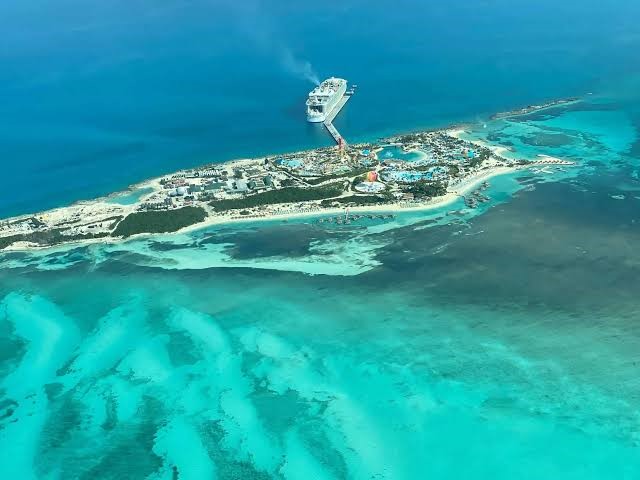
Cayman Islands

02.11.2023
Cayman Islands , Daily Current Affairs , RACE IAS : Best IAS Coaching in Lucknow
|
For Prelims: Cayman Islands,History,Currency and Language,Climate and Weather,Population and Culture,Environmental Conservation,Economy For Mains : FATF,Objectives of FATF,Roles and Functions,Black List,Grey List,Implementation of the recommendations of FATF |
Why in the news?
Cayman Islands’ recent exit from the FATF grey list is expected to bolster global private equity funds looking to invest in non-banking financial companies (NBFCs) based in India.
About Cayman Islands:
- It is a British Overseas Territory located in the Western Caribbean Sea.
- The territory comprises the three islands of Grand Cayman, Cayman Brac, and Little Cayman, located south of Cuba and northwest of Jamaica.
- The Cayman Islands are a self-governing territory under the sovereignty of the United Kingdom.
- They have their own government and legal system, with a Governor representing the British monarch as the head of state.
History:
- The Cayman Islands were colonised by the British during the 18th and 19th centuries and were administered by Jamaica after 1863.
- In 1959, the islands became a territory within the Federation of the West Indies.
- When the Federation dissolved in 1962, the Cayman Islands chose to remain a British dependency.
Currency and Language
- The official currency is the Cayman Islands Dollar (KYD), but the US Dollar is widely accepted.
- English is the official language spoken by the majority of the population.
Geography: The geography of the Cayman Islands is low-lying with coral reefs.
Climate and Weather
- The Cayman Islands have a tropical climate with warm temperatures throughout the year.
- The islands are susceptible to hurricanes during the Atlantic hurricane season (June to November).
Capital: Its capital is George Town, which is located on Grand Cayman Island.
Population and Culture
- The population of the Cayman Islands is diverse, with a mix of Caymanians and expatriates from various countries.
- The local culture is influenced by Caribbean, British, and other international elements.
Environmental Conservation
- The Cayman Islands are known for their rich biodiversity and marine life.
- Efforts are made to protect coral reefs, wildlife, and natural habitats through conservation initiatives.
Economy:
- The Cayman Islands are known for their robust financial services industry, including banking, insurance, and offshore financial activities.
- The territory is considered a major international financial center.
- The Cayman Islands have a mixed economic system, and the islands are a thriving offshore financial centre.
- They are considered a tax haven because the Cayman Islands do not impose a corporate tax, making it an ideal place for multinational corporations to base subsidiary entities to shield some or all of their incomes from taxation.
- The Cayman Islands do not impose taxes on residents. They have no income tax, no property taxes, no capital gains taxes, no payroll taxes, and no withholding tax.
- Without tax income, the Caymans earn revenue via fees related to tourism and work permits, financial transactions, and import duties.
Tourism Industry
- It is a significant contributor to the economy, with visitors attracted to the islands' pristine beaches, coral reefs, and water sports opportunities.
- The tourism sector offers a range of accommodations, luxury resorts, and outdoor activities.
What is FATF?
- It stands for Financial Action Task Force was established in 1989,
- It is an intergovernmental body formed in Paris during the G7
- Its Secretariat is situated at the Organisation for Economic Cooperation and Development (OECD) headquarters in Paris.
- The FATF reviews money laundering and terrorist financing techniques and continuously strengthens its standards to address new risks, such as the regulation of virtual assets, which have spread as crypto currencies gain popularity.
- The FATF monitors countries to ensure they implement the FATF Standards fully and effectively and holds countries to account that do not comply with the standards.
- India became an Observer at FATF in 2006.Since then, it had been working towards full-fledged membership. On June 25, 2010, India was taken in as the 34th country member of FATF.
Objectives of FATF:
To set standards and promote effective implementation of legal, regulatory and operational measures for combating money laundering, terrorist financing and other related threats to the integrity of the international financial system.
Roles and Functions:
- Initially it was established to examine and develop measures to combat money laundering.
- In October 2001, the FATF expanded its mandate to incorporate efforts to combat terrorist financing, in addition to money laundering.
- In April 2012, it added efforts to counter the financing of proliferation of weapons of mass destruction.
Black List:
- Countries known as Non-Cooperative Countries or Territories (NCCTs) are put on the blacklist. These countries support terror funding and money laundering activities. The FATF revises the blacklist regularly, adding or deleting entries.
Grey List:
- Countries that are considered a safe haven for supporting terror funding and money laundering are put on the FATF Grey list. This inclusion serves as a warning to the country that it may enter the blacklist.
- Three countries North Korea, Iran, and Myanmar are currently in FATF’s blacklist.
Implementation of the recommendations of FATF
It monitors the implementations through the periodic evaluation
a)Anti-money laundering (AML)
b)Combating the financing of terrorism (CFT)
c) Proliferation financing system (PF system ).
Source:Business standard